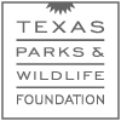I have a couple of questions. we have just under 400 acres in Menard county on the San Saba river. We currently feed the deer herd year round with protein, cottonseed and corn and plant fall food plots. My question is that we are always looking for ways to improve the native habitat on our place. We have oaks, mesquites and lots of cedars. I have always read that mesquites are great bc they help fixate nitrogen in the soil and that they provide a high energy feed (mesquite beans) for deer in the dry summer time. We have a few fields that have mesquites in them and my dad wants to remove the mesquites, but my thoughts are to leave them since we don't have many mesquites and to focus more on cedars than mesquites. It seems that the best forbs are always growing under mesquites. My dads afraid that the cattle will spread the mesquites through their poop. I think cedars have their place for thermal cover but we have a bunch of cedars. What are yalls thoughts on what we should do and why? I really appreciate your input.
Announcement
Collapse
No announcement yet.
Range Management Question
Collapse
X
-
Aerial Picture & Other Pictures
Here is a map of our place:
I've posted a bunch of pictures of our place on a thread named "Gleaton Chip Ranch" and it shows the type of terrain. Here's the link with all of the pictures:
We just had a bunch of cedar mulching done and have been very impressed with the results. Please let me know your thoughts on the mesquites and what's the best thing to do to improve the deer/wildlife habitat. Thanks for your help.
Comment
-
I would say that we probably have around 300 oak trees scattered throughout our property. We obviously have thousands and thousands of cedars that grow on the ridges and hills, which we will leave. We have some mesquites here and there that are growing near fences and in some of the fields. If I was to estimate the trees we have on our property, it would be:
60% Cedars
20% Brush (Lotebush, Sumac, etc.)
15% Oaks
<5% Mesquites
Comment
-
Gotcha, I didn't make the connection to your other thread for some reason. I'm assuming in looking at the aerial that the dark green areas are your cedar thickets.
We are doing some of the same things at our place that you are doing. (Clearing the cedars around and oak trees, clearing the useable food plot areas for planting)
Our Mesquite method: We grub out mesquites that were shredded in the past and that are turning into a bush. We prune up single-mast mesquites to turn them into a taller tree. We are generally leaving more mesquites as they add some value, as you note.
Our Cedar method: were clearing about 90% of them from the pastures. We're leaving a few to sit by when hunting a dove plot, etc. For our cedar thickets, we are doing selective removal to reduce the cedar coverage down to 30-50% of what it is now. This was recommended by extension agent biologists and I agree.
Our cedar thickets are so thick that the deer don't really use the area, when we go through and cut lanes through the cedar and prune up selected trees, leaving some thicker areas, it becomes more of a useable habitat. (Grass/forb growth on the ground, some shade from taller cedars, some cover from shorter cedars and shrubs that come up after cedar removal).
Deer like "early successional range conditions", i.e., what the landscape would look like a couple years after a fire, and that is what I keep in mind when I'm working brush.
Comment
-
Shouldn't we keep the mesquites that we have and not remove them since we don't have many? I just thought that we should probably focus more on cedars bc the mesquites do offer beans in the summer time and help fixate nitrogen in the soil. I've always thought that mesquites are good for deer range especially when your place is overrun with cedars.
Comment
-
Originally posted by bgleaton View PostShouldn't we keep the mesquites that we have and not remove them since we don't have many? I just thought that we should probably focus more on cedars bc the mesquites do offer beans in the summer time and help fixate nitrogen in the soil. I've always thought that mesquites are good for deer range especially when your place is overrun with cedars.
Yeah, I think you should keep them and focus more on the cedars.
Comment
-
This. First, kill all your cedars. They are useless.Originally posted by Doe Doe Spike View PostKeep the mesquites. Eradicate the cedars. Cedars use more soil moisture and allow nothing to grow under or around them. They have very little if any wildlife benefit and create a monoculture.
You can also disk/plow areas that you haven't planted. Little nooks/crannies etc, next to roads, fences and small patches etc and not plant anything. Some natural/native seeds will germinate after they are "disturbed". Once sunlight or moisture hits them, they will take off.
Comment



Comment